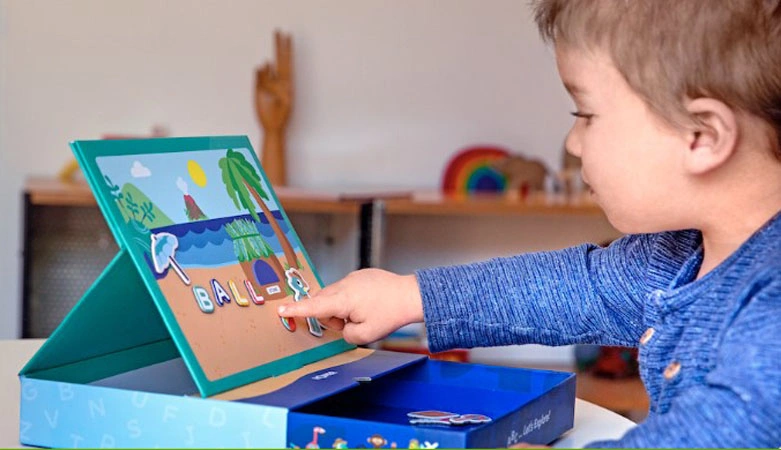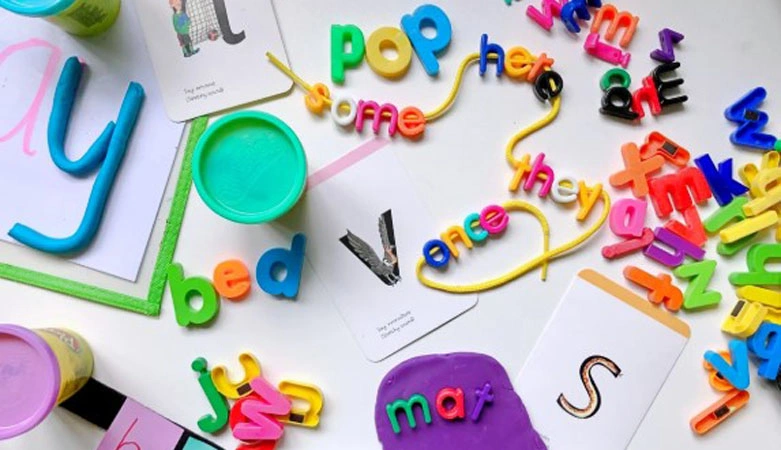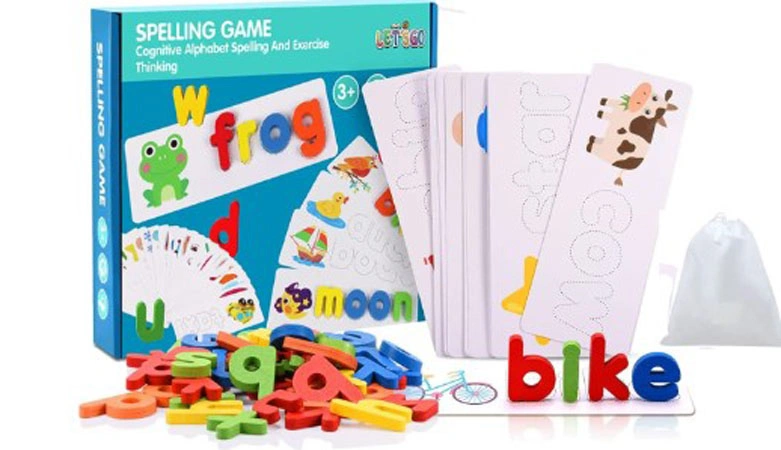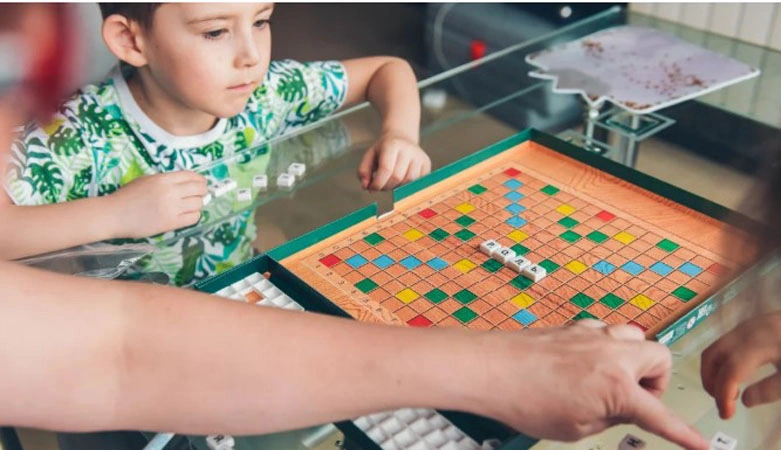Spelling Games for Kids: Enhancing Literacy Through Fun Activities
- Baby
-
- UPDATED November 27, 2024
by Tasha Mayberry
990 shares

Spelling games offer a dynamic way to make learning engaging and enjoyable for kids. By incorporating different types of spelling activities, you can transform routine spelling practice into an exciting playtime experience. These games not only reinforce spelling skills but also foster a love for language in young learners.
You can utilize a variety of interactive methods such as online spelling games or printable activities tailored to your child’s level and interests. For instance, resources like VocabularySpellingCity provide fun and engaging vocabulary practices that integrate seamlessly into your child’s learning routine. Whether your child enjoys the allure of screen time or hands-on activities, there’s a spelling game to suit every preference.
Introducing spelling games into your educational toolbox helps children progress through spelling stages at their own pace. Activities like those recommended by Demme Learning or Teach Beside Me are ideal for fostering skills in elementary-aged children. Ultimately, these games present a unique opportunity to combine education with entertainment, making spelling an enjoyable adventure.
Fundamentals of Spelling Game Design
Designing spelling games for kids involves a blend of understanding their developmental stages, applying educational theories, creating engaging elements, and striking a balance between challenge and fun. Each aspect plays a crucial role in crafting an effective learning tool that captivates and educates young minds.

Understanding Child Learning Stages
To create effective spelling games, it’s important to cater to the cognitive and motor skills of the target age group. Children’s learning stages vary significantly, from recognizing basic letters to forming words with complex vowel combinations. By aligning game complexity with the child’s developmental stage, you ensure that it remains both accessible and challenging.
Younger children may benefit from games focusing on simple letter recognition, while older children might engage more with activities involving different types of vowel teams or words with less frequent letter combinations. Adjust the difficulty level to match these learning phases, ensuring an optimized educational experience.
Incorporating Educational Theories
Incorporating educational theories like constructivism or behaviorism can significantly enhance your spelling game design. Constructivist approaches encourage discovery, allowing children to explore and understand spelling rules through interactive gameplay. This approach fosters active learning and self-driven problem solving.
On the other hand, behaviorist strategies focus on repetition and reinforcement to solidify spelling skills. By structuring games where correct answers are consistently rewarded, you can reinforce desired spelling behaviors. The integration of these theories helps develop games that cater to diverse learning preferences, improving both engagement and educational outcomes.
Elements of Engaging Spelling Games
Creating engaging spelling games requires combining visual stimuli, interactivity, and clear goals. Visual elements, such as colorful graphics and animations, capture the child’s attention, making the learning process enjoyable. Interactivity enhances engagement, enabling kids to actively participate in crafting their learning journey.
The inclusion of clear objectives, like scoring points or completing levels, provides motivation and direction. Such goals can be coupled with immediate feedback to support learning. To keep games fresh and exciting, consider introducing varied challenges and new vocabulary, which can maintain the child’s interest over time.
Balancing Challenge and Entertainment
Achieving the right balance between challenge and entertainment is crucial for maintaining a child’s interest. Games that are too easy may fail to keep them engaged, while overly difficult challenges can cause frustration. A well-calibrated difficulty gradient is essential to accommodate different learning speeds.
Introducing progressive challenges that adapt as children improve helps sustain motivation. This can be achieved through scaling game complexity, incorporating more difficult spelling tasks, and varying gameplay mechanics. By maintaining this equilibrium, you ensure that learning remains a fun, motivating, and rewarding experience.
Creating a Spelling Game Toolkit
Building a spelling game toolkit involves selecting appropriate materials, leveraging digital tools, and integrating hands-on activities with technology. This approach fosters a comprehensive and engaging learning experience for children.

Selecting the Right Materials and Resources
Choosing the right materials is crucial for engaging learners effectively. Start with basic supplies like letter tiles, flashcards, and workbooks that cater to different spelling stages. Letter tiles allow for hands-on manipulation, helping children form and rearrange words. Flashcards serve as a quick, interactive way to practice spelling without overwhelming learners.
Create a list of common words and vowel teams, such as “oi” and “ou,” to cater to various learning needs. Picture dictionaries and age-appropriate books are also beneficial. These materials should be age-appropriate and adaptable to different skill levels to keep children motivated and challenged.
Digital Tools and Software
Incorporating digital tools can significantly enhance the spelling learning process. Spellerz offers customizable online spelling and typing games, allowing educators to tailor word lists to specific learning objectives. This tool includes a timed element that adjusts based on the number of words, adding a competitive edge.
Apps and online platforms like Flippity’s Spelling Words enable personalized learning experiences where students can safely practice at their own pace. These digital tools often include interactive features, animations, and instant feedback, helping to reinforce spelling skills effectively.
Crafting Physical Spelling Games and Activities
Physical games are an excellent way to make spelling engaging and interactive. Consider creating board games or word puzzles that incorporate spelling challenges. Using DIY materials, such as homemade game boards and word magnets, can make the experience more tactile.
Traditional games like Scrabble or customized word bingo can also be adapted to focus on specific spelling rules or word families. Games should encourage friendly competition and cooperative learning, making the practice effective and enjoyable. This approach caters to different learning styles, particularly those that benefit from physical interaction.

Integrating Technology in Spelling Games
Technology integration bridges the gap between traditional learning methods and modern educational practices. Tools like Flippity offer platforms where you can easily create and share customized spelling games using Google Sheets.
Apps that combine augmented reality can bring an innovative twist to learning, turning everyday devices into powerful educational tools. By incorporating multimedia elements, you cater to visual and auditory learners, keeping the spelling experience dynamic.
Using smartboards or tablets in classrooms allows students to interact directly with digital content, making spelling lessons more engaging and effective.